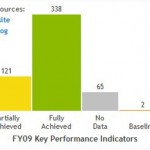Best Practices in Environmental Sustainability Reporting: DyStar
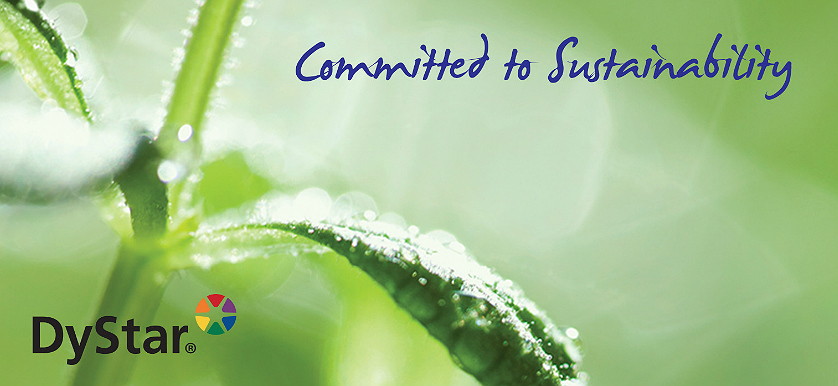
dystar
In recent years, sustainability reporting has evolved from best practice to practically the norm in almost all large companies around the world. Ensuring transparency of sustainability efforts is gaining increased importance, particularly with reference to the business environment.
For example, a 2018 research report prepared by the Sustainable Investments Institute found that 78% of the 500 largest companies in the US have issued a sustainability report for the most recent reporting period.
Most of these reports are especially inclusive of environmental and social performance metrics. The global rate comes in even higher, with approximately 93% of companies having published their sustainability reports worldwide.
According to the same report published by the Sustainable Investments Institute, the main reasons behind such important developments in the field of sustainability reporting are the more widespread use of the Internet, increased awareness of and debate around climate change and “dwindling public trust in institutions”.
While it is the decision of every company to choose the preferred outline and content of their sustainability report, using a predefined structure and applying independent standards is very helpful in terms of both the effectiveness of disclosing ESG (environmental, social and governance) information and ensuring you release a highly qualitative report.
The most widespread and comprehensive standards, as far as sustainability reporting is concerned, can be found with the Global Reporting Initiative (GRI), and their Sustainability Reporting Standards.
They include 3 universal standards that are applicable to all organizations (foundation, general disclosures and management approach) and 33 topic specific standards, structured into Economic, Environmental and Social measures.
DyStar Group, “a leading dyestuff & chemical manufacturer and solution provider that provides customers across the globe with a broad portfolio of colorants, specialty chemicals, and services”, is one of the companies that applies the GRI standards in their 2018-2019 sustainability report.
While abiding by all GRI requirements, the report is a good example on how to present relevant information in a concise and clear manner. Here are some of the strong suits of DyStar’s Sustainability Report for 2018-2019.
GRI Content Index
If the reader wants to learn more specifically about how DyStar adopted the GRI standards, they can use the GRI Content Index as a navigation tool that makes information traceable and increases transparency.
This approach is especially useful when comparing different sustainability reports based on GRI criteria, because it presents all GRI dimensions, the indicators and descriptions for each dimension, and most importantly the page numbers under which one can find the information related to each specific indicator.
By using a table to present the data, it is easily searchable and relevant information can be extracted from the report without any difficulties.
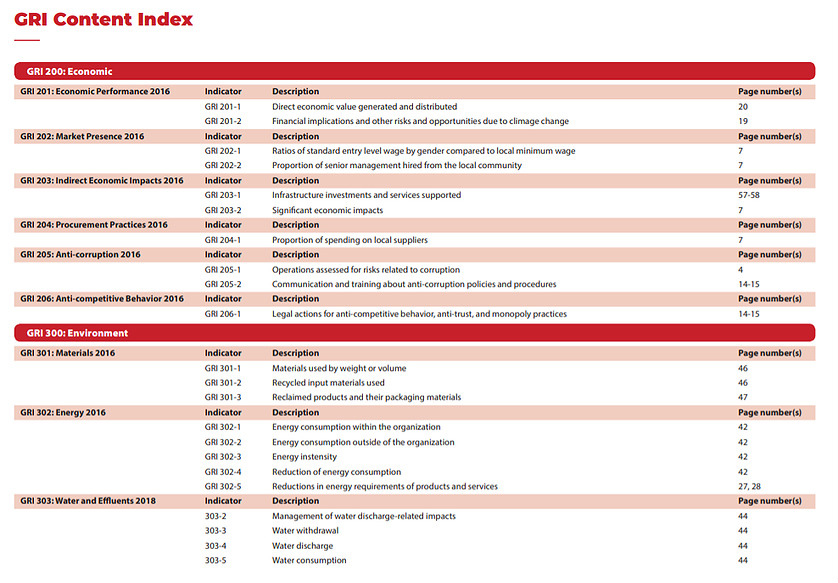
gri content index
KPI Dashboard
It has been proven that information retention can be improved by using visual means instead of simply describing or listing relevant information. While it is not overdone, there is a visual representation of the most important sustainability KPIs measured by the organization, as follows:
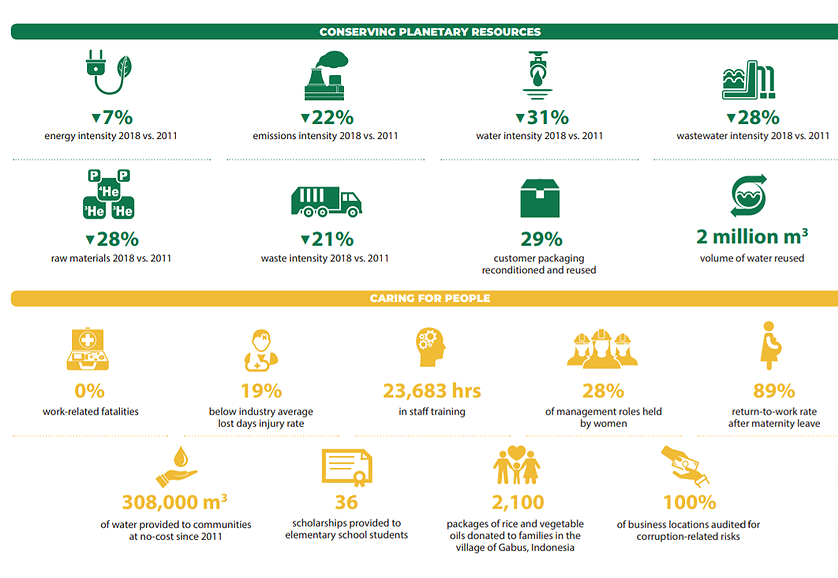
conserving planetary resources
Leadership close-up
To create a strong sustainability culture, culture shifts need to be encouraged across all organizational levels, starting with top management. DyStar introduced a section in their sustainability report that does just that.
Fanny Vermandel, Vice President of the Global Marketing Coloration at DyStar Group, gave an interview on their e-confidence program, a program especially dedicated to ensuring the sustainability of the value chain. In its closing, she said the following:
“Our future is about sustainability – this is how we as a company differentiate ourselves. For us, it is essential to protect our planet and the colorful life on it. We strive to be an environmental and innovation leader, and therefore it is our obligation to provide “Best in Class” products and competitive solutions. Every day, we strive to prove and communicate that our products are high-performing.”
SDG index
DyStar reviewed how their sustainability activities contribute to the achievement of the United Nations’ Sustainable Development Goals. The structure of this part of the report is very similar to their GRI Content index, as follows:
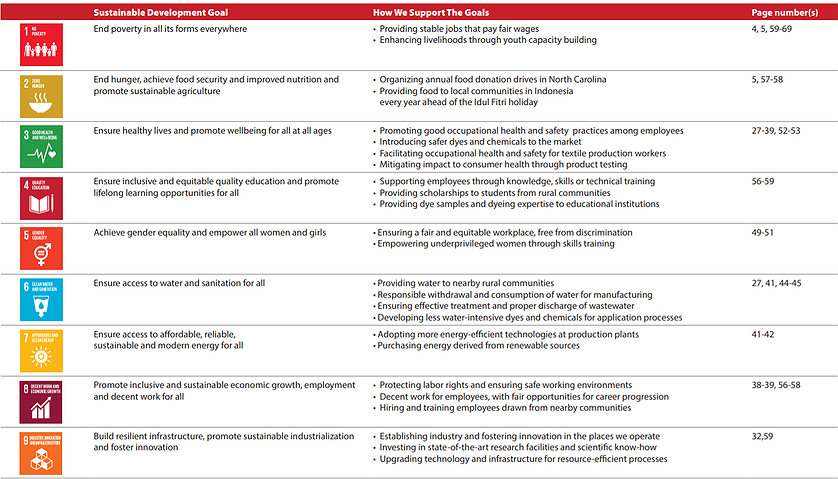
development goal
Stakeholder engagement
Another great feature of this report is that it mentions all relevant stakeholders, when it comes to achieving sustainability goals, and presents a mechanism for engagement for each of them, while also mentioning the typical frequency of each mechanism:
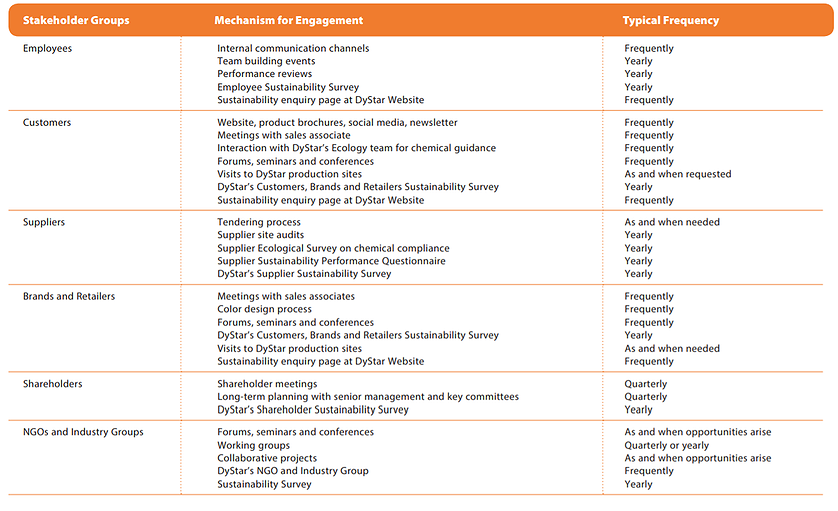
engagement
Overall, the DyStar report is a great example on how to present information on sustainability in a clear, concise and engaging way, thus motivating all stakeholders to contribute to the achievement of the proposed sustainability goals, while also becoming part of the international initiative towards ensuring a better and more sustainable future for all.
Image sources:
Tags: Dashboard, Sustainability performance




